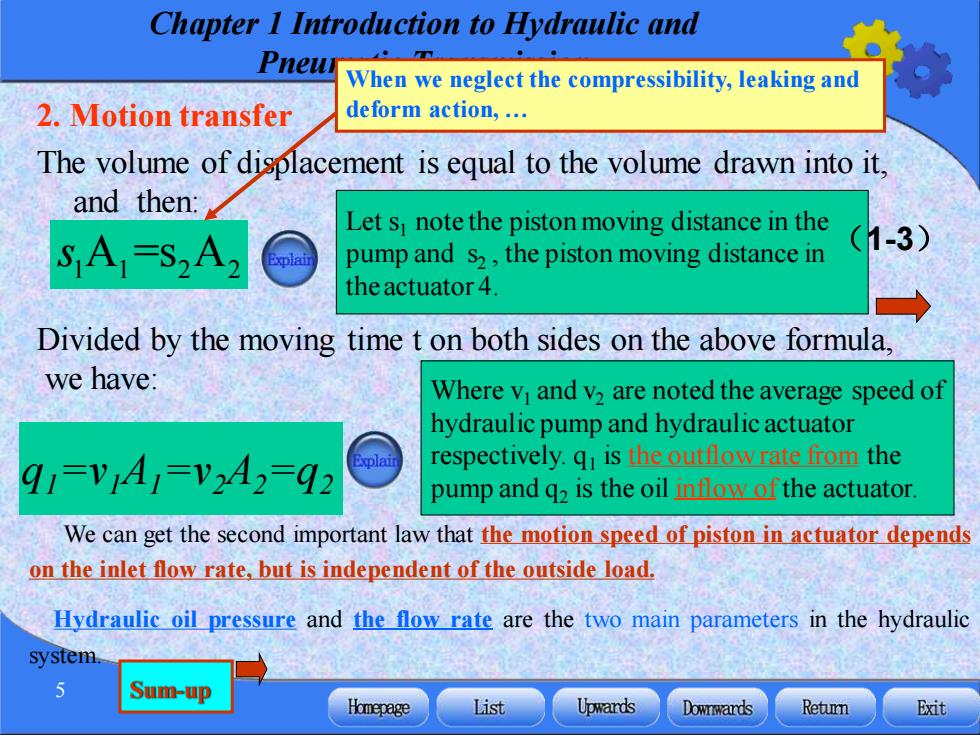正在加载图片...

Chapter I Introduction to Hydraulic and Pneur When we neglect the compressibility,leaking and 2.Motion transfer deform action,. The volume of displacement is equal to the volume drawn into it, and then: Let s note the piston moving distance in the SA=S2A2 pump and s2,the piston moving distance in (1-3) the actuator 4 Divided by the moving time t on both sides on the above formula. we have: Where v and v2 are noted the average speed of hydraulic pump and hydraulic actuator 91=V1A1=V2A2=92 respectively.q is the outflow rate from the pump and q2 is the oil inflow of the actuator We can get the second important law that the motion speed of piston in actuator depends on the inlet flow rate,but is independent of the outside load Hydraulic oil pressure and the flow rate are the two main parameters in the hydraulic system. 5 Sum-up Homepage List Upwards Downwards Retumn Exit Chapter 1 Introduction to Hydraulic and Pneumatic Transmission 5 (1-4) We can get the second important law that the motion speed of piston in actuator depends on the inlet flow rate, but is independent of the outside load. Hydraulic oil pressure and the flow rate are the two main parameters in the hydraulic system. s1 1 2 2 A =s A 2. Motion transfer The volume of displacement is equal to the volume drawn into it, and then: Let s1 note the piston moving distance in the pump and s2 , the piston moving distance in theactuator 4. (1-3) Divided by the moving time t on both sides on the above formula, we have: Where v1 and v2 are noted the average speed of hydraulic pump and hydraulic actuator respectively. q1 is the outflow rate from the pump and q2 is the oil inflow of the actuator. q1=v1A1=v2A2=q2 When we neglect the compressibility, leaking and deform action, . Sum-up